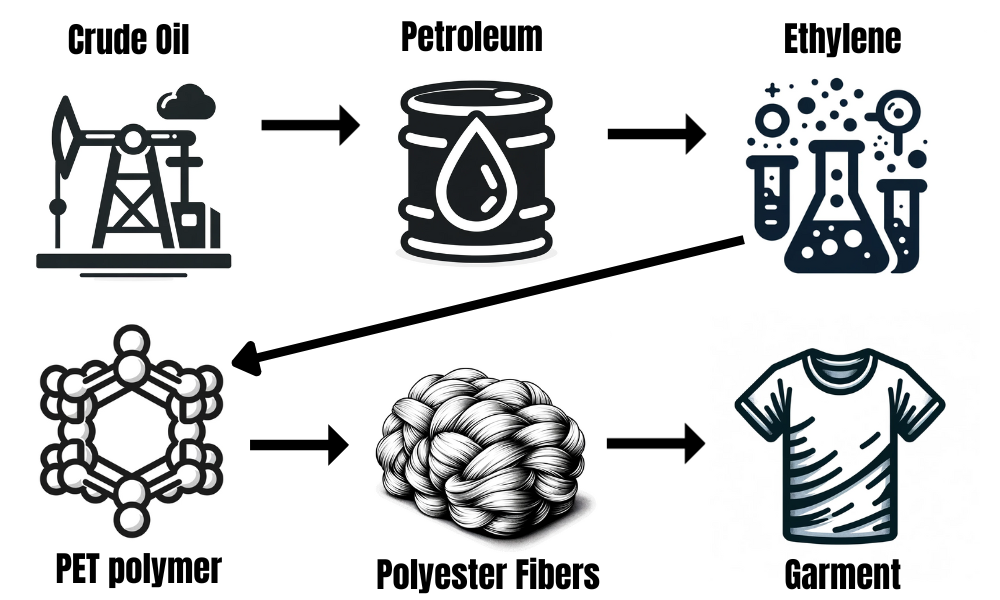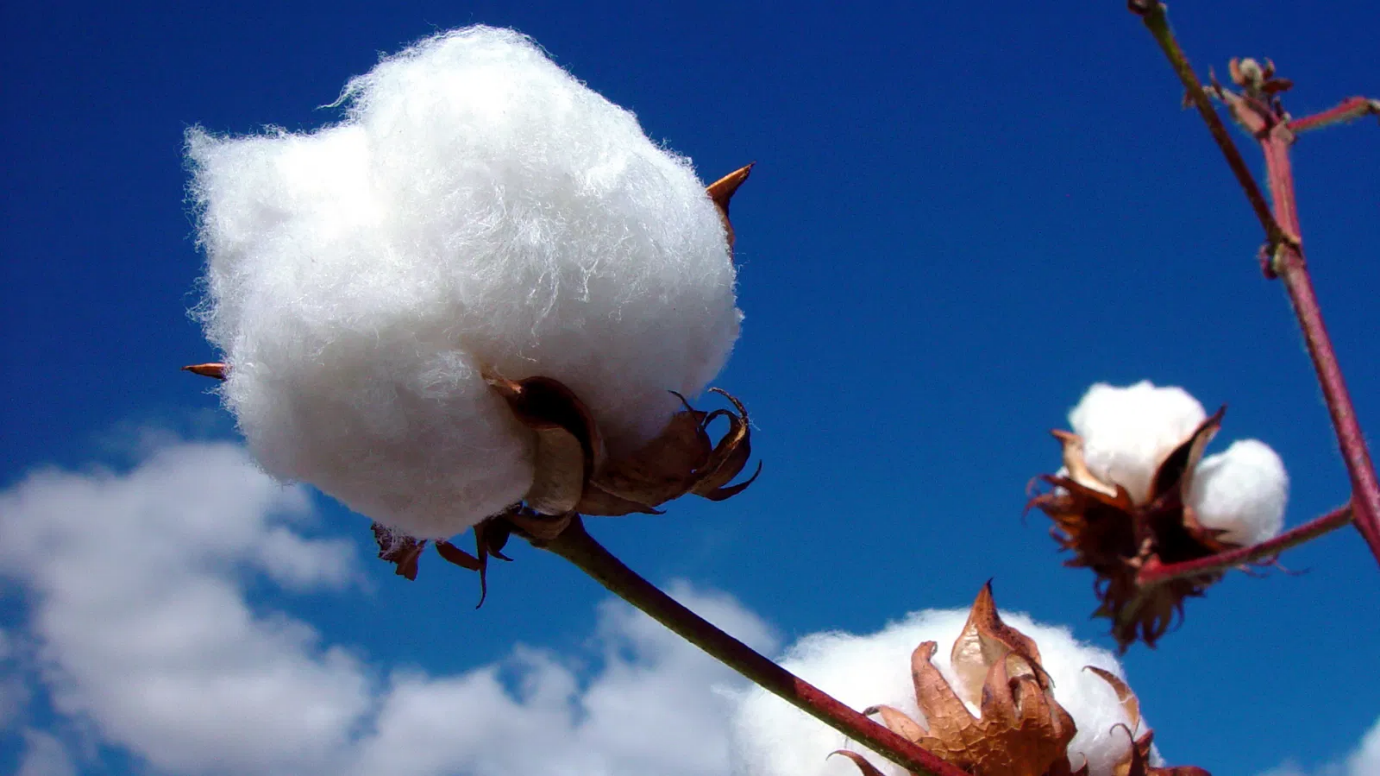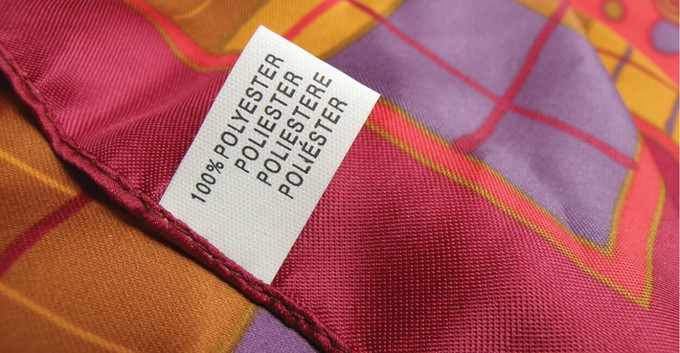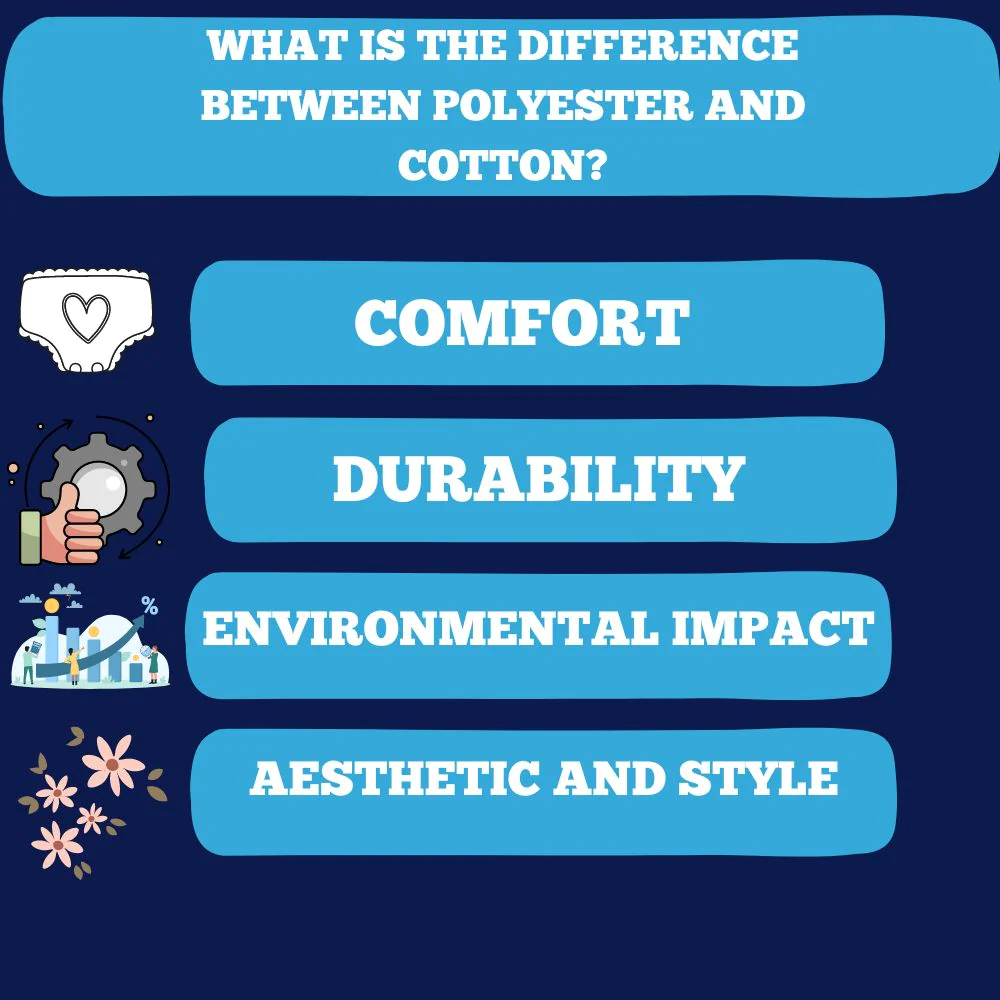People commonly look up information about polyester versus cotton when they shop for clothing and household goods. The benefits and risks of these materials determine their suitability for different uses in textile production.
Most buyers want to know, “What is polyester made of?” What are the differences between polyester and natural cotton? Our primary concern is whether polyester damages human health and the environment. Buyers who make conscious choices about their fabric selections need to learn accurate fabric details.

This guide examines the production of polyester and cotton, as well as their applications in everyday life and the environmental and health impacts on people. You can learn the ideal fabric choice for your daily life by examining how different fabrics meet your preferences for fashion style, home design, and environmental values. Let’s reveal the actual facts about these two leading fabric companies.
What is Polyester Fabric? A Synthetic Powerhouse
The production of polyester fabric relies on synthetic components extracted from oil-based resources, mainly polyethylene terephthalate (PET). Polyester gained worldwide usage in textile production during the 1940s because of its strength, low cost, and ability to fight wrinkles and remain intact.

Polyester Manufacturing Process
Polyester is made from polyethylene terephthalate (PET), a plastic derived from crude oil. To understand how polyester is made, you need to explore its synthetic polymer foundation.
Manufacturers start the polymerization process with ethylene glycol and terephthalic acid. The manufacturing process joins many molecules together to produce resilient, extended chains.
Melted PET passes through spinnerets to become long threads or filaments. Manufacturers draw filaments from the stretched and cooled PET material before making them into woven or knitted polyester fabric. The synthetic fabric shows outstanding strength plus shields against wrinkles while staying in shape.
However, the production of polyester requires fossil fuels, which create problems for our environment. Despite environmental concerns, it stays very popular around the world because polyester offers affordable benefits and reliable results.
Common Uses of Polyester Fabric
Polyester is widely used in:
· Activewear and outerwear (due to their moisture-wicking capabilities)
· Home textiles such as curtains, tablecloths, and bed linens
· Industrial products like ropes, insulation, and packaging materials
Polyester fabric has become essential for industry since its durability matches its ability to resist creases and needs fewer resources to make.
What is Polyester Made Of? Composition and Environmental Considerations
Learning the material composition of polyester explains both its operating features and harmful effects on the environment.

PET: The Core of Polyester Fabric
Polyethylene terephthalate is the basic material used to produce polyester fabric. Polyester’s strong thermoplastic structure creates a durable fabric that resists wrinkles and wicks away water. PET comes from oil processing into polyester material, despite its synthetic production creating environmental concerns.
To better understand PET materials and the components that make up polyester, read more about them here.
https://www.sciencedirect.com/topics/chemistry/polyethylene-terephthalate
Recycled Polyester (rPET) and Sustainability
Recycled polyester (rPET) offers a sustainable fabric option by turning used plastic bottles, especially PET types, into new fibers through remelting and re-spinning methods. While rPET poses environmental challenges, it decreases our need for oil and prevents used plastics from entering landfills.
Environmentally aware shoppers need to know which fabrics have lower carbon footprints, so they should explore rPET fabrics.
Read more about rPET and environmental friendliness
https://textileexchange.org/rpet
How Polyester’s Synthetic Nature Affects Durability, Strength, and Cost
Polyester was made as a synthetic material to deliver endurance strength and lasting value in its products. Polyester fabric lives up to industrial standards because it will not stretch, shrink, or wrinkle in regular situations.
The polyester manufacturing process generates low production costs, which supports extensive industry output. Its strength and budget-friendly qualities make polyester preferred for applications that need long-lasting durability.
What is Cotton Fabric? A Natural and Timeless Choice
Cotton fabric is a natural textile product that originates from the soft fibers of the cotton plant. People have used cotton as a fabric for many years because of its smooth feel and its good air circulation while being safe for the skin.

The Cotton Cultivation Process
Cotton plants grow best in warm, sunny areas to start the cultivation process. The mature bolls go through harvesting, followed by processing on a cotton gin to split fibers from seeds. After cleaning and processing, workers spin cotton fibers into yarn, which they build into lightweight, breathable cotton fabric.
People widely use natural cotton in clothing items, medical supplies, plus bedding production. Organic cotton farming uses natural instead of chemical methods to produce eco-friendly materials at a higher price. People who care about the environment choose organic products to reduce damage to our planet.
Common Uses of Cotton Fabric
Cotton is commonly used in:
· Apparel: t-shirts, jeans, baby clothes
· Home goods: bedsheets, towels, curtains
· Medical supplies: bandages, gauze, cotton swabs
Cotton fabric’s hypoallergenic and biodegradable qualities make it a popular option for customers with sensitive skin and those who care about the environment.

Polyester vs Cotton: Comprehensive Fabric Comparison
Comfort and Feel: Polyester vs Cotton for Daily Wear
· Polyester: The fabric pulls sweat away from your skin to keep you dry while working out. Yet the material holds heat more strongly and promotes poor air circulation.
· Cotton: Soft and breathable. It absorbs moisture, which helps some users feel better, but it isn’t right for active sports.
Durability and Performance: Polyester vs Cotton in Longevity
· Polyester: The fabric endures constant stress without wrinkling or fading while keeping its size. It withstands regular laundry cycles without damage.
· Cotton: It gets smaller and develops wrinkles, but gains softness through repeated washing. Naturally weak against physical damage.
Environmental Impact: Polyester vs Cotton Sustainability
· Polyester: The product comes from fossil fuel sources and can never break down. Recycled polyester performs better than virgin polyester but releases small plastic particles.
· Cotton: Traditional farms need much water and pesticide protection, yet produce materials with safe natural resources.
For an overview of cotton’s environmental toll, visit: https://www.worldwildlife.org/industries/cotton
Cost Comparison: Polyester vs Cotton Pricing
· Polyester: Less costly as a result of reduced manufacturing expenses. Ideal for customers on a tight budget.
· Cotton: More expensive, particularly for organic varieties. Provides long-term comfort advantages.
Care and Maintenance: Polyester vs Cotton in Laundry
· Polyester: Machine washable, fast drying, wrinkle-resistant.
· Cotton: Requires more care—can shrink, wrinkle, and take longer to dry.
Is Polyester Bad for You? Health Implications and Concerns
People wonder about polyester’s health and safety impacts. So, is polyester bad for you?
Chemical Residue in Polyester Fabric
Polyester production creates tiny amounts of antimony, formaldehyde, and dyes, which stay behind in the final product. Despite low chemical levels in polyester products, users experience minimal skin allergies and irritations.

Hypoallergenic Qualities: Cotton vs Polyester for Sensitive Skin
· Polyester: It draws sweat away from the body, yet irritates delicate skin. Not biodegradable.
· Cotton: Breathable and natural, it’s frequently suggested for infants and those with eczema or allergies.
Pros and Cons of Polyester vs Cotton: Quick Overview
Your decision between polyester and cotton depends on their specific characteristics. The ideal fabric depends on how you live your life, what feels best to you, and which material supports your environmental values. These highlights will show you what to consider before picking between cloth types.
Polyester Fabric
✅ Highly durable and long-lasting
✅ Moisture-wicking, ideal for activewear
✅ Affordable and easy to maintain
❌ Less breathable than natural fibers
❌ Made from synthetic materials creating environmental issues
Cotton Fabric
✅ Soft, breathable, and gentle on the skin
✅ Made from natural fibers, often preferred for comfort
✅ Widely used in bedding, baby clothes, and casual wear
❌ Prone to wrinkles, shrinking, and fading
❌ Environmentally demanding due to water and pesticide use

Polyester vs Cotton: Which Fabric is Right for You?
Choosing between polyester and cotton for your clothes has no single best solution. Your fabric selection should match your personal choices and outlook on life at a cost that suits you, with consideration for your values.
· Choose polyester when you require functional clothing, strong fabrics, or easy maintenance materials.
· Choose cotton if comfort, breathability, and eco-friendliness are your top priorities.
Ultimately, understanding what polyester is made of, how it compares to cotton, and whether it’s bad for you can empower you to shop more consciously.
Conclusion: Choosing Between Polyester vs Cotton
Your decision between polyester and cotton fabric needs to match what you need and what you prioritize. Polyester fabric suits people who stay active because it holds up under stress and pulls sweat from your skin while being simple to take care of and affordable. Polyester serves well within athletic clothes, together with outerwear and work garments. You should consider how polyester fabric is made from synthetic materials and its environmental impact, even when not made from recycled sources.
Cotton fabric provides exceptional comfort and breathability alongside its natural soft texture, which makes it suitable for all kinds of clothing and bedding for sensitive skin types. Organic cotton represents a sustainable solution, but traditional cotton requires high resource consumption in production.
Your choice should match your personal needs and values. Understanding polyester basics and its distinctions from natural cotton can help you make the right product choice.
Make informed choices. Wear what aligns with you.
Additional Resources
· Learn more about sustainable fabrics: https://www.sustainyourstyle.org/old-environmental-impacts
· Explore cotton and polyester certifications: https://global-standard.org/
Call to Action: Make an Informed Fabric Choice
Yanmao Textile Technology Co., Ltd guides you through textile choices by sharing knowledge and recommending eco-friendly product picks. We support all your fabric sourcing needs, whether you need materials for fashion or interior design.
Download our fabric comparison e-book or book a free fabric consultation to start making smarter choices today!





